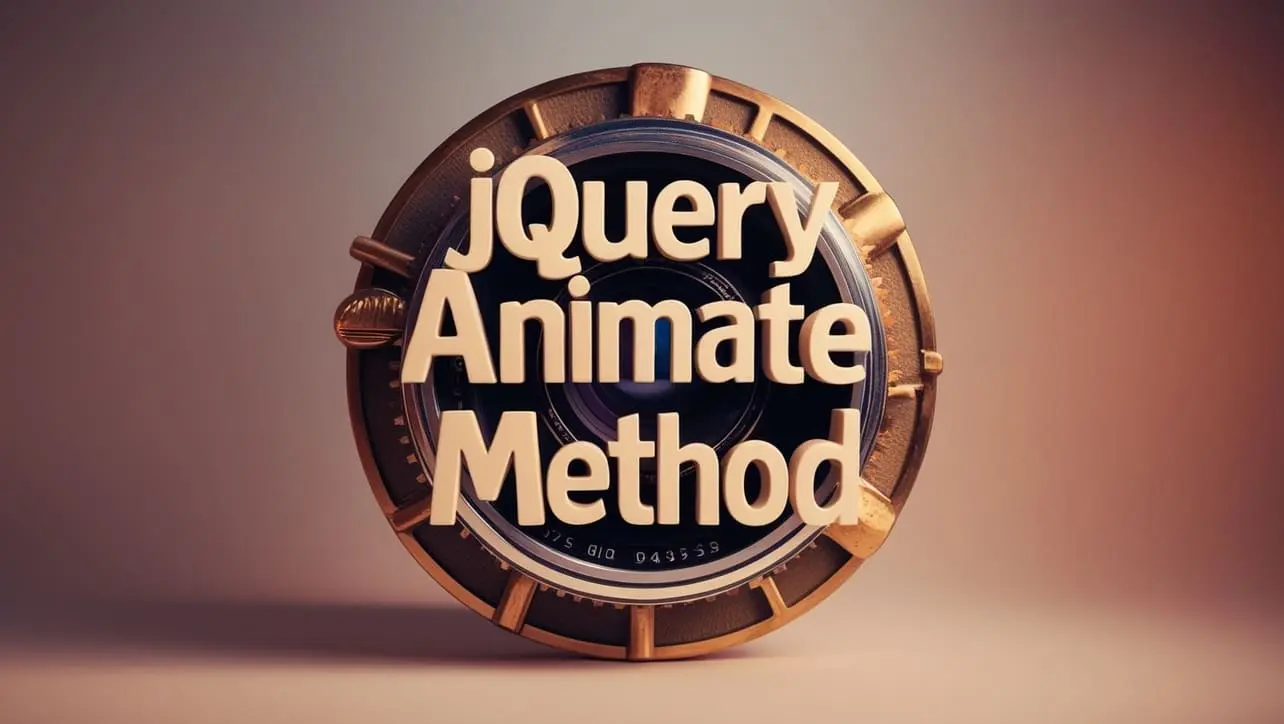
jQuery Topics
- jQuery Introduction
- jQuery Callbacks
- jQuery deferred
- jQuery selectors
- jQuery Ajax Events
- jQuery Ajax Methods
- jQuery Keyboard Events
- jQuery Keyboard Methods
- jQuery Form Events
- jQuery Form Methods
- jQuery Mouse Events
- jQuery Mouse Methods
- jQuery Event Properties
- jQuery Event Methods
- jQuery HTML
- jQuery CSS
- jQuery Fading
- jQuery Traversing
- jQuery Utilities
- jQuery Properties
jQuery .animate() Method

Photo Credit to CodeToFun
🙋 Introduction
jQuery offers a plethora of methods for animating elements on web pages, making user interactions more engaging and visually appealing. One such method is .animate(), which enables you to create custom animations for CSS properties. Understanding and mastering the .animate() method can significantly enhance your ability to add dynamic effects to your web projects.
In this comprehensive guide, we'll explore the usage of the jQuery .animate() method with detailed examples to help you grasp its full potential.
🧠 Understanding .animate() Method
The .animate() method in jQuery is used to perform custom animations on selected elements. It allows you to animate changes in CSS properties such as width, height, opacity, and more. By specifying the target CSS properties, duration, easing function, and optional callback function, you can create smooth and sophisticated animations that enhance the user experience.
💡 Syntax
The syntax for the .animate() method is straightforward:
$(selector).animate(styles, duration, easing, complete);Parameters:
- selector: Specifies the element(s) to be animated.
- styles: An object containing the CSS properties and values to animate.
- duration: The duration of the animation in milliseconds or predefined strings like "slow" or "fast".
- easing (optional): Specifies the easing function to be used for the animation.
- complete (optional): A function to be executed once the animation is complete.
📝 Example
Animating CSS Properties:
Let's start with a simple example where we animate the width and opacity of a <div> element:
index.htmlCopied<div id="box"></div>example.jsCopied$("#box").animate({ width: "200px", opacity: 0.5 }, 1000);This will animate the width of the <div> to 200 pixels and change its opacity to 0.5 over a duration of 1000 milliseconds (1 second).
Chaining Animations:
You can chain multiple animations together for sequential effects. Here's an example where we animate the width, height, and color of a <div> element sequentially:
index.htmlCopied<div id="box"></div>example.jsCopied$("#box").animate({ width: "200px" }) .animate({ height: "200px" }) .animate({ backgroundColor: "blue" });This will first animate the width, then the height, and finally change the background color to blue.
Using Easing Functions:
jQuery provides various easing functions to control the pace of animations. Let's use the
"swing"easing function in this example:index.htmlCopied<div id="box"></div>example.jsCopied$("#box").animate({ width: "200px", height: "200px" }, 1000, "swing");This will apply a swinging motion to the animation, starting slowly, accelerating in the middle, and slowing down again towards the end.
Callback Functions:
You can utilize the callback function parameter to execute code after the animation completes. For example:
example.jsCopied$("#box").animate({ width: "200px" }, 1000, function() { alert("Animation complete!"); });This will display an alert message once the animation is finished.
🎉 Conclusion
The jQuery .animate() method is a versatile tool for creating custom animations on web pages. Whether you're animating simple CSS properties or chaining multiple animations together, this method empowers you to add dynamic and engaging effects to your projects.
By mastering its usage and exploring its various options, you can elevate the user experience and bring your designs to life with fluid and captivating animations.
👨💻 Join our Community:
Author

For over eight years, I worked as a full-stack web developer. Now, I have chosen my profession as a full-time blogger at codetofun.com.
Buy me a coffee to make codetofun.com free for everyone.
Buy me a Coffee












If you have any doubts regarding this article (jQuery .animate() Method), please comment here. I will help you immediately.